Post Date
January,
16
2018
At the beginning of this week I took a little journey up I-95 just North of Baltimore to the little town called Aberdeen. The place were I discovered my purple accents, and my precious black Rubicon. It was time for my oil change, my last "free" oil change.
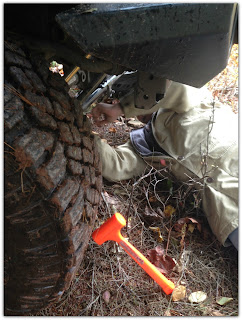
Since the mechanics at Adams Extreme Motorsports had my Jeep on the lift, I asked them to check out my steering. Ever since I slammed my Jeep down, hard on a rock, back in October at Rausch Creek, my steering has seemed a little off. While turning to the right, I wasn't getting the full range of my turn radius.

When I heard, and felt, that big "clunk" on the trail, I knew I had done some damage. At the time however, we thought I just twisted up the steering stabilizer bracket.

But today, I found out I did a little more than that. My steering stabilizer was leaking fluid. I wasn't too upset because I planned on replacing it anyways, just not this soon, and not by professionals.
My little bit of trail damage back in October was a great lesson. It helped me to learn just another new little tidbit about my Jeep.
 The factory steering stabilizer on a Wrangler isn't really built for off-road conditions or over-sized tires. They are ridiculously small. The thin-gauge body caves easily under the slightest pressure, and they are notorious for leaking.
The factory steering stabilizer on a Wrangler isn't really built for off-road conditions or over-sized tires. They are ridiculously small. The thin-gauge body caves easily under the slightest pressure, and they are notorious for leaking.
Well, that is exactly what happened to mine. That "thud" on the rock caused some body damage which in turn caused the small leak.
 Jeep Momma TIP: If you are still running your OE stabilizer take off that boot. This original equipment stabilizer also comes with a plastic boot. All this boot does is collect dirt, sand and salt, and traps it, which can cause premature wear on your piston rod.
Jeep Momma TIP: If you are still running your OE stabilizer take off that boot. This original equipment stabilizer also comes with a plastic boot. All this boot does is collect dirt, sand and salt, and traps it, which can cause premature wear on your piston rod.
Since they took off my damaged stabilizer, and they had a aftermarket one in stock, I said why not! I planned on putting one on anyways.
We put on a JKS Manufacturing Steering Stabilizer a direct replacement steering stabilizer that outperforms the OE damper in every aspect.
The heavy-gauge steel body is considerably larger allowing greater fluid capacity, while the increased shaft and piston size provide improved damping performance.
A tight fluid containment seal uses higher quality materials and a better design to prevent oil loss regardless of mounting position. And superior polyurethane bushings at each end last longer and reduce loss of motion.
Plus, if you notice it sits up higher and snuggles behind the tie rod. The stock stabilizer hung down below my tie rod.

This was the exact reason I wanted a new one. To move it out of the way to help protect it while off-roading. Plus, I get the bonus of a beefier stabilizer.

Since the mechanics at Adams Extreme Motorsports had my Jeep on the lift, I asked them to check out my steering. Ever since I slammed my Jeep down, hard on a rock, back in October at Rausch Creek, my steering has seemed a little off. While turning to the right, I wasn't getting the full range of my turn radius.

When I heard, and felt, that big "clunk" on the trail, I knew I had done some damage. At the time however, we thought I just twisted up the steering stabilizer bracket.

But today, I found out I did a little more than that. My steering stabilizer was leaking fluid. I wasn't too upset because I planned on replacing it anyways, just not this soon, and not by professionals.
My little bit of trail damage back in October was a great lesson. It helped me to learn just another new little tidbit about my Jeep.
 The factory steering stabilizer on a Wrangler isn't really built for off-road conditions or over-sized tires. They are ridiculously small. The thin-gauge body caves easily under the slightest pressure, and they are notorious for leaking.
The factory steering stabilizer on a Wrangler isn't really built for off-road conditions or over-sized tires. They are ridiculously small. The thin-gauge body caves easily under the slightest pressure, and they are notorious for leaking. Well, that is exactly what happened to mine. That "thud" on the rock caused some body damage which in turn caused the small leak.
 Jeep Momma TIP: If you are still running your OE stabilizer take off that boot. This original equipment stabilizer also comes with a plastic boot. All this boot does is collect dirt, sand and salt, and traps it, which can cause premature wear on your piston rod.
Jeep Momma TIP: If you are still running your OE stabilizer take off that boot. This original equipment stabilizer also comes with a plastic boot. All this boot does is collect dirt, sand and salt, and traps it, which can cause premature wear on your piston rod. Since they took off my damaged stabilizer, and they had a aftermarket one in stock, I said why not! I planned on putting one on anyways.
We put on a JKS Manufacturing Steering Stabilizer a direct replacement steering stabilizer that outperforms the OE damper in every aspect.
OE = Original Equipment
Stabilizer = Damper
A steering damper, or steering stabilizer is a damping device designed to inhibit an undesirable, uncontrolled movement or oscillation of a vehicle steering mechanism, a phenomenon known in motorcycling as wobble.
The heavy-gauge steel body is considerably larger allowing greater fluid capacity, while the increased shaft and piston size provide improved damping performance.
A tight fluid containment seal uses higher quality materials and a better design to prevent oil loss regardless of mounting position. And superior polyurethane bushings at each end last longer and reduce loss of motion.
Plus, if you notice it sits up higher and snuggles behind the tie rod. The stock stabilizer hung down below my tie rod.

This was the exact reason I wanted a new one. To move it out of the way to help protect it while off-roading. Plus, I get the bonus of a beefier stabilizer.
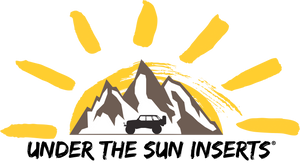






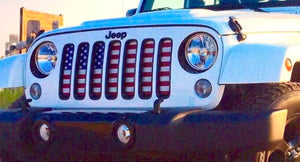
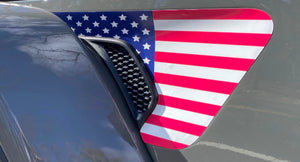
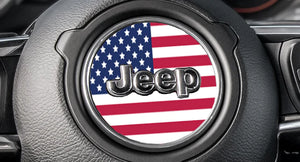
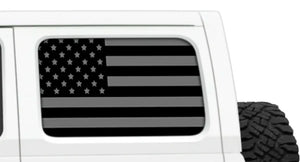
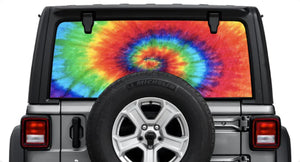
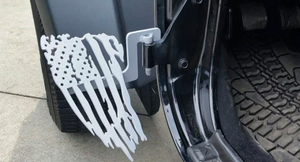
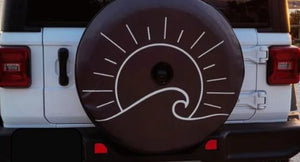
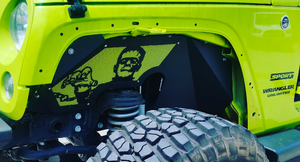
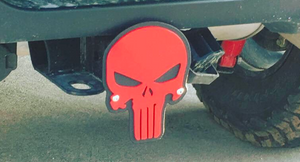
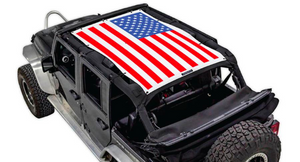
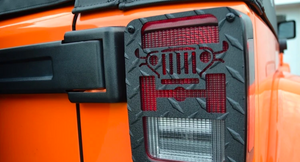
Leave a comment